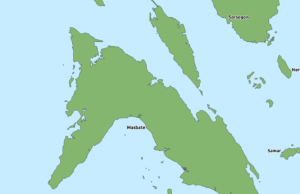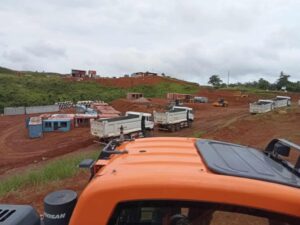Dependence on fertilizer imports dooms PH food security


The Covid-19 pandemic has further exposed the backward state of Philippine agriculture. Global agricultural production disruptions caused by lockdowns, quarantines, border controls and transportation production are increasing uncertainties about food security in the Philippines as its heavily dependent on imports to meet local consumption demands. The looming food crisis puts a very bright spotlight on the need to urgently rethink the reactionary state’s neoliberal and import-dependent strategy to achieving food security. It also points to the need to address the chronic local agricultural crisis marked by decades of neglect and low productivity.
On top of widespread landlessness, the absence of a self-sufficient fertilizer industry and low fertilizer consumption are among the starkest manifestations of the non-industrial and agrarian backwardness of the Philippines. On average, the Philippines utilizes 157 kilograms of fertilizer per hectare of arable land. This is relatively low compared to that utilized in Vietnam (429.8 kg). Low utilization indicates that many Filipino farmers are either not applying or applying sub-optimal levels of fertilizers. This can be attributed to skyrocketing prices of imported fertilizers, among other farm inputs, which flood local markets.
Fertilizer prices in the Philippines are extremely high relative to global average prices. The average price of urea, the most common type of fertilizer used by Filipino farmers, was P1,030 per 50-kg sack earlier in June this year. This is more than double the global average price of the commodity (P505) in the same month. Prices of other major grades of inorganic fertilizers including complete NPK (P1,072), ammonium sulfate (P586), ammonium phosphate (P961) and potassium (P1,197) are similarly high compared to global average prices.
Relative to the national average, the most expensive fertilizers are being sold in Eastern Visayas, followed by Bicol. Both regions are mainly agricultural and the former also happens to be the fourth poorest region in the country.
Farmers are left at the mercy of big foreign agrochemical corporations as fertilizers being sold in local markets are mostly imported. In 2018, the Philippines imported a total of 2.37 million metric tons (MT) of fertilizer amounting to approximately P34.76 billion. This is equivalent to more than 75% of the total fertilizer supply (3.15 million MT) in the country during the same year.
In 2019, fertilizer imports further rose to 2.57 million MT amounting to P35.4 billion. Of this quantity, 40% (1 million MT amounting to P13 billion) was sourced from China. Substantial volumes were also imported from other Southeast Asian countries. The Philippines fully imports its urea supply as manufacturing plants are incapable of production. This was the biggest import (856,853 MT) in 2018 followed by ammonium sulfate (496, 716 MT).
Fertilizer importation has been practically limitless since quantitative restrictions were dismantled in 1992; and duty-free since the implementation of the Agriculture and Fisheries Modernization Act of 1997. These policies were implemented in compliance with the General Agreement on Tariffs and Trade and the Agreement on Agriculture of World Trade Organization to liberalize agricultural trade. These neoliberal schemes have further doomed any possibility for the country to develop a self-sufficient fertilizer manufacturing industry and perpetuated its import-dependence.
On the other hand, local fertilizer production is limited to just four private agrochemical companies based in the Philippines, namely Soiltech Agricultural Products (which has a capacity of manufacturing 1 million MT/year), Atlas Fertilizer Corp. (230,000 MT), Farmfix Fertilizer (50,000 MT), and International Chemical Industries Inc. (22,000 MT). These companies are limited to blending raw materials such as phosphate rocks, anhydrous ammonia and sulfuric acid which they fully import from other countries, primarily China.
Currently, disruptions caused by the Covid-19 pandemic on the production of fertilizers across the globe pose a formidable challenge to the local agricultural sector. Last August, the global average price of urea sharply increased from just P536 in July to P624 per sack. The pre-pandemic average recorded in December 2019 was P543.75. Economists warn that production and supply chains, including that of fertilizers, may be further disrupted and prices may further increase should a second Covid-19 wave rage.
As the economy is mainly dependent on foreign imports, the disruptions are expected to similarly jack up fertilizer prices in the local market which will ultimately be shouldered by farmers as end-users. This will primarily affect palay farmers as 38% of the total fertilizer consumption goes to rice, followed by corn (21%), and fruits and vegetables (7%), and result in lower yields, hence, less food supplies for the people.










